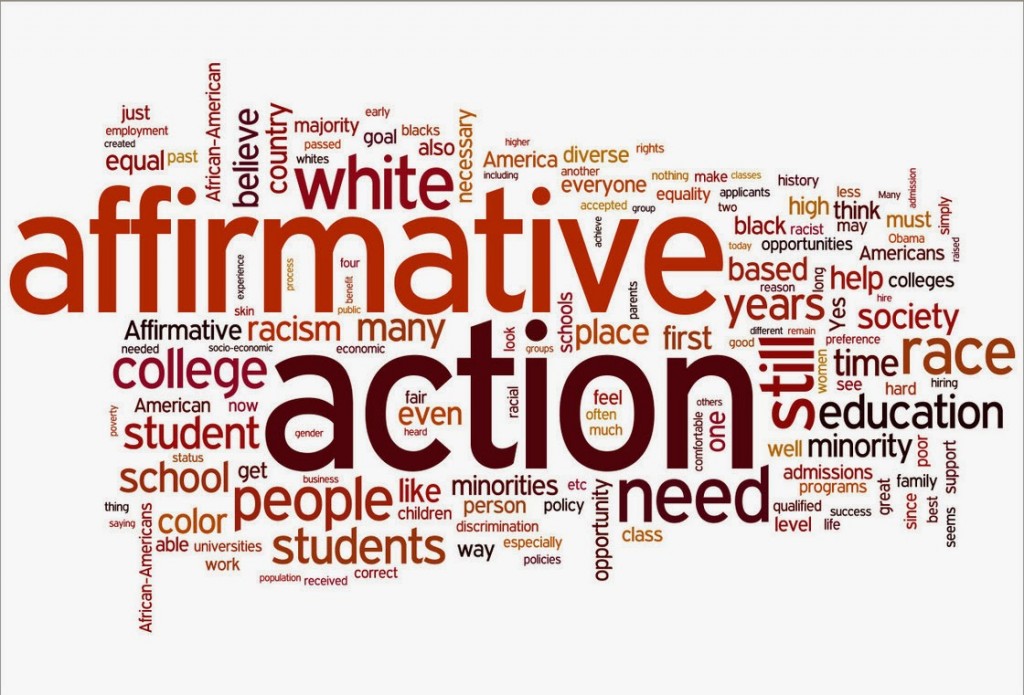How race-based Affirmative Action college admissions policies are harming Asian-American students
 The educational performance of Asian-Americans is outstanding. Whereas Asian-Americans make up 5.6% of the U.S. population, according to the complaint to the Department of Educatiin, they make up more than 30% of the recent American maths and physics Olympiad teams and Presidential Scholars, and 25-30% of National Merit Scholarships.
The educational performance of Asian-Americans is outstanding. Whereas Asian-Americans make up 5.6% of the U.S. population, according to the complaint to the Department of Educatiin, they make up more than 30% of the recent American maths and physics Olympiad teams and Presidential Scholars, and 25-30% of National Merit Scholarships.
Allan Brownfeld Global News Centre
(WASHINGTON DC) The goal of the civil rights movement was the creation of a color-blind society in which men and women would be judged, as the Rev. Martin Luther King, Jr. declared, on the “content of their character, not the color of their skin.” That philosophy, however, was soon replaced by policies of “affirmative action,” in which people would indeed be judged on the color of their skin in a variety of endeavors. One of these related to college admissions policies in which standards applied to minority students, in effect, gave them points for their minority status and considered judging them on the basis of their academic achievement or SAT scores as, somehow, unfair.
Many black leaders, particularly in the academic community, opposed such race-based programs. Professor Shelby Steele, for example, declared: “Good intentions can blind us to the effects they generate when implemented, In our society, affirmative action is, among other things, a testament to white good will and to black power…I think affirmative action has shown itself to be more bad than good and that blacks…now stand to lose more from it than they gain…The 1964 Civil Rights Act was passed on the understanding that equal opportunity would not mean racial preference. But in the late ’60s and early ’70s, affirmative action underwent a remarkable escalation of its mission from simple anti-discrimination enforcement to social engineering by means of quotas, goals, timetables, set-asides and other forms of preferential treatment.”
Dr. Steele laments that this has all turned into a new form of racism, only in reverse: “By making black the color of preference, these mandates have again burdened society with the very marriage of color and preference (in reverse) that we set out to eradicate…I think one of the most troubling effects of racial preferences for blacks is a kind of demoralization. Under affirmative action, the quality that earns us preferential treatment is an implied inferiority. The effect of preferential treatment—the lowering of normal standards to increase black representation—puts blacks at war with an expanded realm of debilitating doubt, so that the doubt itself becomes an unrecognized preoccupation that undermines their ability to perform.”
One of the unintended consequences of race-based affirmative action college admissions policies has been their effect on another minority, Asian-Americans. Consider the case of Michael Wang, a California student who came second in his class of 1,002 students, his ACT score was 36, the maximum possible, he sang at Barack Obama’s inaugural and was in third place in a national piano contest. Yet, he was rejected by six of the seven Ivy League colleges to which he applied,.
“I saw people less qualified than me get better offers,” says Wang. “At first I was just angry. Then I decided to turn that anger to productive use.” He wrote to the universities concerned: “I asked, what more could I have done to get into your college? Was it based on race, or what was it based on?” He received vague responses—or none at all.
In May, Wang joined a group of 64 Asian-American organizations that made a joint complaint to the Departments of Education and Justice against Harvard, alleging racial discrimination. That follows a lawsuit filed last year against Harvard and the University of North Catolina at Chapel Hill by a group of Asian-American students making similar charges. Two more complaints have been filed by Asian-Americans since then, one against Harvard and nine against other universities.
The educational performance of Asian-Americans is outstanding. Whereas Asian-Americans make up 5.6% of the U.S. population, according to the complaint to the Department of Educatiin, they make up more than 30% of the recent American maths and physics Olympiad teams and Presidential Scholars, and 25-30% of National Merit Scholarships. Among those offered admission in 2013 to New York’s most selective public high schools , Stuyvesant High School and the Bronx High School Of Science, 75% and 60% respectively were Asian. The Asian population of New York City is 13%.
The Asian culture respects education and hard work. A study at the University of Utah shows that Asian-American parents are a lot likelier to spend at least 20 minutes a day helping their children with their homework than any other ethnic group. In “The Asian-American Achievement Paradox,” a study based on interviews with young Chinese and Vietnamese in Los Angeles, as well as Mexicans, whites and blacks, Jennifer Lee and Min Zhou argue that it’s not just what happens at home that matters. They point to “ethnic capital”—the fact that these groups belong to communities that support education—as part of the explanation.
Asian-Americans do end up in leading universities but not in the numbers their high school performance should merit. Thomas Espenshade and Alexandra Walton Radford of Princeyon have looked at the data on college admissions and concluded that Asian-Americans need 140 SAT points out of 1,600 more than whites to get a place at a private university, and that blacks need 310 fewer points.
A coalition of Asian-American organizations states that, “The discrimination in college admissions is the biggest civil rights issue Asian-Americans suffer from.” Harvard, in particular, has been criticized for some time. A 2014 lawsuit by a group called Students for Fair Admissions compared the school’s treatment of Asian-Americans to its treatment of Jewish applicants nearly nine decades ago when Harvard expanded its admission criteria beyond academic achievement. This was used as a means of cracking down on the growing percentage of Jewish freshmen that then-President A. Lawrence Lowell feared would “ruin the college.”
As these cases proceed, the Supreme Court has announced that it would once again consider the case of Fisher v. University of Texas at Austin. In this case a white applicant argues that students with lesser academic credentials were accepted while she, because she was white, was rejected. The court considered this case in 2013 but refused to decide whether the university’s admission plan, which combines race-neutral and race-conscious tools to achieve diversity., was constitutional. The court’s return to the subject after an appeals court sustained the hybrid plan, reports The New York Times, “has struck many supporters of affirmative action as an ominous sign.”
The Texas case was brought by the Project on Fair Representation, a conservative advocacy group which is also involved in the cases being brought by Asian-American organizations. Its leader, Edward Blum, says: “It has become apparent in America in 2015 that affirmative action is no longer a black and white issue. We are now a multi-racial, multi-ethnic nation and for colleges and universities to classify students by race and treat them differently by race no longer fits within the old paradigm.”
In the view of black economist Thomas Sowell, affirmative action programs are largely responsible for the atmosphere of racial antagonism on many university campuses. He points to the fact that, “Minority students are systematically mismatched with institutions. It starts at the top colleges and universities, whose visibility and prestige make it politically necessary that they have a significant ‘representation’ of blacks among their students…The drive to get a good-looking ‘body count’ of black students leads the top colleges and universities to go way beyond the pool of black students who meet their normal admissions standards…Under those conditions, many black students discover too late that the ‘opportunity’ to go to a big name school turns out to be a trap.”
The way to end discrimination on the basis of race is clear: end discrimination on the basis of race. Today, it is Asian-Americans who are being victimized in large numbers by race-based affirmative action admissions policies. The Supreme Court has an opportunity to bring such policies to an end. In doing so, it would move us toward a genuinely color-blind society, exactly what the civil rights movement had in mind.
__________________________________
Allan C. Brownfeld received his B.A. degree from the College of William and Mary, his J.D. degree from the Marshall-Wythe School of Law of the College of William and Mary and his M.A. in Government and Politics from the University of Maryland. He has served on the faculties of St. Stephen’s Episcopal School, Alexandria, Virginia, and the University College of the University of Maryland.
The recipient of a Wall Street Journal Foundation Award, Mr. Brownfeld has written for such newspapers as THE HOUSTON PRESS, THE RICHMOND TIMES DISPATCH, THE WASHINGTON EVENING STAR and THE CINCINNATI ENQUIRER. For many years he wrote three columns a week for such newspapers as THE PHOENIX GAZETTE, THE MANCHESTER UNION LEADER, and THE ORANGE COUNTY REGISTER. His weekly column appeared for more than a decade in ROLL CALL, the newspaper of Capitol Hill. His articles have appeared in such journals as THE YALE REVIEW, THE TEXAS QUARTERLY, THE NORTH AMERICAN REVIEW, ORBIS and MODERN AGE.
Mr. Brownfeld served as a member of the staff of the U.S. Senate Internal Security Subcommittee and was the author of that committee’s 250-page study of the New Left. He has also served as Assistant to the Research Director of the House Republican Conference and as a consultant to such members of Congress as Reps. Phil Crane (R-Il) and Jack Kemp (R-NY) and to the Vice President of the United States.
He is a former editor of THE NEW GUARD and PRIVATE PRACTICE, the journal of the Congress of County Medical Societies and has served as a Contributing Editor AMERICA’S FUTURE and HUMAN EVENTS. He served as Washington correspondent for the London-based publications, JANE’S ISLAMIC AFFAIRS ANALYST and JANE’S TERRORISM REPORT. His articles regularly appear in newspapers and magazines in England, South Africa, Sweden, the Netherlands and other countries. You can write to Allan at [email protected]


















 London
London
 Oregon
Oregon





Leave a Reply
You must be logged in to post a comment.